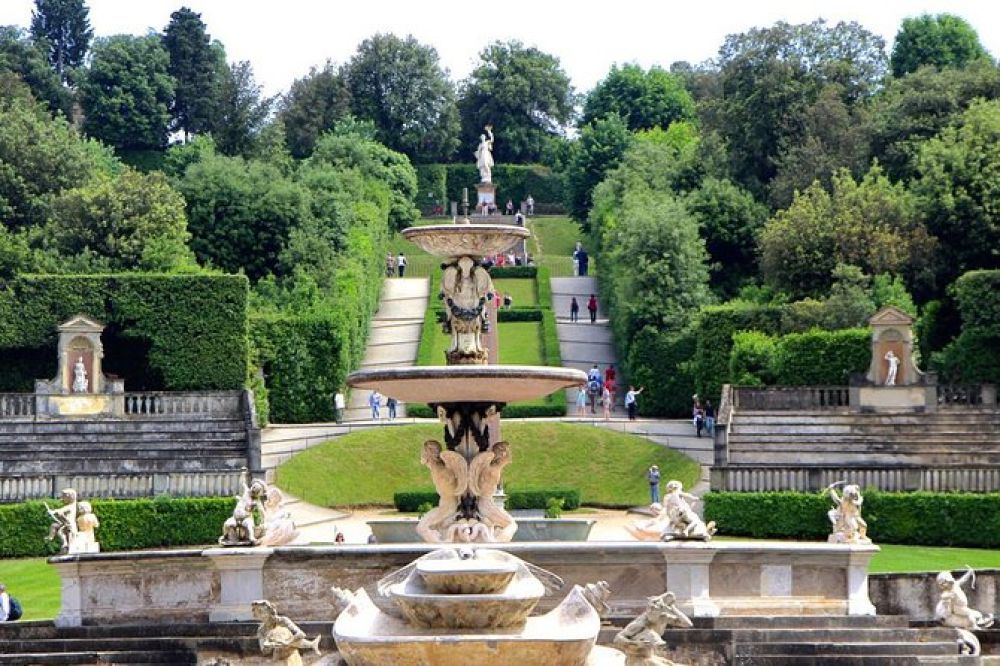

Located in Florence, Italy, the Boboli Gardens is a historic park that dates back to the 16th century. Created originally for the Medici family, the grand dukes of Tuscany, as a private garden for the Palazzo Pitti, its design was mainly done by Niccolò Tribolo, who died a year after the project began. Following his death, work was continued by other notable architects such as Bartolomeo Ammannati and Bernardo Buontalenti.
The Boboli Gardens are an exemplary showcase of "green architecture" decorated with sculptures dating from the 16th through the 18th centuries, with Roman antiquities. It is patterned in a formal garden style which includes a collection of outdoor sculpture, including ancient Roman, Renaissance, and Baroque pieces. Over the centuries, the gardens have been extended and diversified by each ruling family or ruler, thus incorporating different styles and features.
The opening of the Gardens to the public occurred in 1766 during the reign of the Lorraine Grand Dukes, who took over after the Medici dynasty. Since then, it has remained open for public enjoyment and has been a significant attraction for both domestic and foreign tourists. With its rich history and its pivotal role in the cultural landscape of Florence, the Boboli Gardens became part of the UNESCO World Heritage list in 2013, under the larger "Historic Centre of Florence" designation.
In recent years, tourism trends at the Boboli Gardens have evolved. There has been a growing emphasis on sustainable tourism practices. Efforts to preserve the historical and natural environment while accommodating tourists have been implemented. This involves managing the flow of visitors to prevent overcrowding and damage to the gardens' grounds and sculptures. The use of audio guides and mobile applications has also been encouraged to enhance the educational aspect of the visit.
Another trend is an increase in hosting cultural events and exhibitions within the gardens, utilizing the outdoor space as a backdrop for art installations and performances. This not only enriches the visitor experience but also highlights the versatility and cultural significance of the gardens.
The utilization of social media and online platforms for promotion and visitor engagement has also become prevalent. Tourists can now plan their visit in advance, purchase tickets online, and even take virtual tours, which is particularly advantageous in the context of the COVID-19 pandemic when travel and visitation may be restricted.
It’s worth mentioning that during the pandemic, there was a shift towards more open-air and nature-based attractions. The Boboli Gardens provided a safe and serene environment for tourists and locals alike, increasing its appeal and relevance to contemporary travel preferences.
The Boboli Gardens continue to draw visitors from around the world, not only for their historical significance and natural beauty but also for their ongoing relevance to the arts and culture scene in Florence.